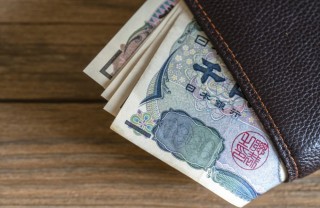Loading
Search
▼ Japan’s Lost-and-Found System Is Insanely Good
- Category:Other
If you misplace your phone or wallet in Tokyo, chances are very good that you’ll get it back. Here’s why.
Phones left in taxis. Briefcases forgotten under train seats. Dropped wallets, abandoned umbrellas, misplaced purses. Japan’s 126 million residents lose a vast number of personal items every year. But a remarkably high percentage of them are returned to their rightful owners.
As a recent BBC story reported, 83 percent of cellphones lost in Tokyo, for example, are eventually retrieved. The scheme for reuniting unlucky people with their wayward valuables relies on a complex mix of infrastructure, carrot-and-stick legal encouragement, and cultural norms. Taken together, they form a shockingly efficient system that has long been a source of wonder for Western observers.
The process usually begins at the local koban “police boxes” that form the basis of Japan’s community-based approach to law enforcement. Koban—some 6,300 spread across the country—are small, strategically located police stations that serve as most residents’ primary point of contact with the police.
Across the sprawling metropolis of Tokyo, more than 4.1 million lost items were turned in to police in 2018, a number that has been rising in recent years. Nationwide, 26.7 million objects were reported missing in 2015. Wallets, purses, and umbrellas are among the most common items turned in, along with cash. A record-setting ¥3.8 billion was reported in 2018; three-quarters of that sum ultimately made its way back to their owners.
In Tokyo, after officers fill in a report at the koban on the lost item and the finder’s identity—more on that later—the items are held at the police box for one month before being sent to the Tokyo Metropolitan Police Department’s newly renovated Lost-and-Found Center.
The Center, located in the capital’s Bunkyo Ward, is a six-story facility that hosts some 900,000 lost items, including a 7,100-square-foot room dedicated solely to umbrellas. (In 2018, 343,725 umbrellas—nearly 8 percent of all lost items—were handed over. On a rainy day, police might accept 3,000 of them.)
Once at the Center, each item is carefully logged and checked for personally identifying information that might assist in contacting the rightful owner. The Center also operates a searchable Japanese-language lost-and-found website cataloguing lost items.
If, after three months, the rightful owner cannot be found, ownership of most items may revert to the person who found it, or to the municipal government. For some unclaimed items, such as clothing, musical instruments, and stationery, local governments may sell the goods to wholesalers, who hold pop-up matsuri sales throughout the month.
Japan’s heavily trafficked rail stations are another common point to return found items, with central rail lost-and-found depots able to store items for up to two weeks before turning them over to police. According to figures released by the Sagami Railway Company, 85,043 items were turned over to station staff in 2018 (about a quarter of them were umbrellas). Of these items, 31.4 percent ultimately found their way back to their rightful owners, although the low number of umbrella retrievals—typically less than 1 percent are claimed—skews this number downward.
A finely tuned lost-and-found system, however, cannot exist on infrastructure alone. Fostering a culture that emphasizes returning lost property is also needed, and in Japan, it is a lesson that begins at a young age.
In a now-viral Twitter post, a woman named Keiko recounted how her young son found a 50-yen coin in a park in Japan’s Hokuriku region. He insisted on turning in the money—worth less than 50 U.S. cents—at a nearby koban.
At first, Keiko (who requested that her family name not be used) worried what reaction the 6-year-old would get from the officers on duty, but the police response surprised her: “Several officers came out [of the koban], asked where and when the coin was picked up, and filled out the official [lost and found] document” and offered praise to her son.
Keiko credits her son’s school for his actions.
“Children are taught at nursery school and kindergarten to return found items to the koban,” she says in an email to CityLab. She also praised the response of officers. “My son is just six years old, but they treated his concerns as those of an adult.”
Indeed, it is not uncommon in Japan to hear stories of young children turning in small coins or trinkets to police, who then dutifully fill out a lost-and-found report. (It helps that police in low-crime Japanese cities often have lots of time on their hands.) Public notices from the police are also periodically released reassuring parents that children returning nominal lost goods are not a burden on officers.
Japanese property laws play a role in the endurance of the country’s culture of returning lost items—a New York Times story from 2004 credits a legal code written in the year 718. More recently, Japan’s Amended Lost Property Act came into force in 2007, mandating that those finding lost items return them to their owner, to the police, or to another designated authority, such as a train station lost-and-found office. This amended law originally derives from lost property legislation dating back to 1882, which tracks closely with the codification of broader property rights that occurred during the Meiji Period.
For finders, Article 28 of the law provides for a reward of 5 to 20 percent of the returned item’s value, in cases where it is reunited with its owner. For items that go unclaimed, the finder is entitled to take ownership after three months have elapsed—excepting goods such as cellphones or items that have potentially identifying information. Finders are, however, permitted to decline the reward and/or remain anonymous.
The question, of course, is whether the Japanese model can be adapted in places where lost-and-found success rates are decidedly lower. In 2003, University of Michigan professor Mark West conducted a famous lost-wallet study comparing return rates in New York City (10 percent) versus Tokyo (80 percent). West has said that such striking displays of community altruism speak to the power of Japanese legal tradition, rather than anything deeper.
“There’s no evidence Japanese people have extreme norms of honesty,” he told the L.A. Times in 2003. “It’s partly cultural training, but mostly the law urges people to hand in lost property to the police.” Worldwide, research has shown a complex psychology behind the return of lost goods, including the surprising finding that the more money a lost wallet contains, the higher the likelihood of it being turned in.
Other cities can definitely take a page from Japan’s robust lost-and-found infrastructure. In 2007, for example, New York City council member Gail Brewer prepared a scathing report on the property recovery scheme used by New York City’s police department and taxi commission, criticizing it as a byzantine “long ride to nowhere.” A confusing, decentralized patchwork of custodians—some of whom are not even aware of their role within the system—and inefficient cataloging methods make phone-and-wallet recovery a crapshoot for New Yorkers.
Police resources are also a factor. North American cities lack koban networks (though several have attempted to replicate that model over the years), and community policing still struggles to supplant traditional approaches to law enforcement.
There’s no single inimitable quality that makes Japan a loser’s paradise. Generating the necessary community buy-in, infrastructure, and policing resources needed to make a successful lost-and-found system, however, requires concerted effort and ample funding. It doesn’t hurt to have many centuries of legal tradition on your side, too.
In a now-viral Twitter post, a woman named Keiko recounted how her young son found a 50-yen coin in a park in Japan’s Hokuriku region. He insisted on turning in the money—worth less than 50 U.S. cents—at a nearby koban.
At first, Keiko (who requested that her family name not be used) worried what reaction the 6-year-old would get from the officers on duty, but the police response surprised her: “Several officers came out [of the koban], asked where and when the coin was picked up, and filled out the official [lost and found] document” and offered praise to her son.
Keiko credits her son’s school for his actions.
“Children are taught at nursery school and kindergarten to return found items to the koban,” she says in an email to CityLab. She also praised the response of officers. “My son is just six years old, but they treated his concerns as those of an adult.”
Indeed, it is not uncommon in Japan to hear stories of young children turning in small coins or trinkets to police, who then dutifully fill out a lost-and-found report. (It helps that police in low-crime Japanese cities often have lots of time on their hands.) Public notices from the police are also periodically released reassuring parents that children returning nominal lost goods are not a burden on officers.
Japanese property laws play a role in the endurance of the country’s culture of returning lost items—a New York Times story from 2004 credits a legal code written in the year 718. More recently, Japan’s Amended Lost Property Act came into force in 2007, mandating that those finding lost items return them to their owner, to the police, or to another designated authority, such as a train station lost-and-found office. This amended law originally derives from lost property legislation dating back to 1882, which tracks closely with the codification of broader property rights that occurred during the Meiji Period.
For finders, Article 28 of the law provides for a reward of 5 to 20 percent of the returned item’s value, in cases where it is reunited with its owner. For items that go unclaimed, the finder is entitled to take ownership after three months have elapsed—excepting goods such as cellphones or items that have potentially identifying information. Finders are, however, permitted to decline the reward and/or remain anonymous.
The question, of course, is whether the Japanese model can be adapted in places where lost-and-found success rates are decidedly lower. In 2003, University of Michigan professor Mark West conducted a famous lost-wallet study comparing return rates in New York City (10 percent) versus Tokyo (80 percent). West has said that such striking displays of community altruism speak to the power of Japanese legal tradition, rather than anything deeper.
“There’s no evidence Japanese people have extreme norms of honesty,” he told the L.A. Times in 2003. “It’s partly cultural training, but mostly the law urges people to hand in lost property to the police.” Worldwide, research has shown a complex psychology behind the return of lost goods, including the surprising finding that the more money a lost wallet contains, the higher the likelihood of it being turned in.
Other cities can definitely take a page from Japan’s robust lost-and-found infrastructure. In 2007, for example, New York City council member Gail Brewer prepared a scathing report on the property recovery scheme used by New York City’s police department and taxi commission, criticizing it as a byzantine “long ride to nowhere.” A confusing, decentralized patchwork of custodians—some of whom are not even aware of their role within the system—and inefficient cataloging methods make phone-and-wallet recovery a crapshoot for New Yorkers.
Police resources are also a factor. North American cities lack koban networks (though several have attempted to replicate that model over the years), and community policing still struggles to supplant traditional approaches to law enforcement.
There’s no single inimitable quality that makes Japan a loser’s paradise. Generating the necessary community buy-in, infrastructure, and policing resources needed to make a successful lost-and-found system, however, requires concerted effort and ample funding. It doesn’t hurt to have many centuries of legal tradition on your side, too.
- February 11, 2020
- Comment (0)
- Trackback(0)



